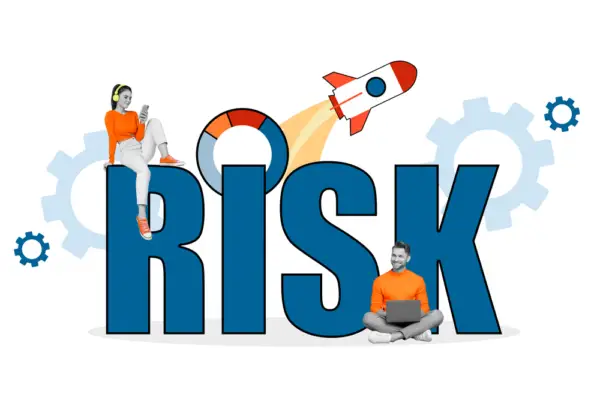This article provides an analytical and organized examination of social risk assessment, a process used to identify and evaluate potential social risks.
The discussion includes a definition of risk assessment, an exploration of various social risks, and a comprehensive overview of the steps involved in the social risk assessment process.
Additionally, the article highlights the importance of internal controls for effective social risk management.
Definition of Risk Assessment
Social risk assessment is a systematic process that aims to identify, evaluate, and manage potential risks associated with social factors in a given context.
It involves the analysis of various social dimensions, such as socioeconomic status, cultural norms, political stability, and community dynamics, to determine the likelihood and potential impact of adverse events on individuals or communities.
When conducting a trust service fraud risk assessment, it is important to consider various factors and steps to ensure a comprehensive evaluation.
One major step is the identification of critical risks, which have a high potential for fraud and can significantly impact the organization.
These risks should be thoroughly assessed by gathering evidence to support the identified risks and determine their likelihood and potential impact.
To mitigate these risks, additional control implementation is necessary. This involves implementing security policies and control sets that align with acceptable levels of risk and compliance requirements.
A readiness assessment can also evaluate the organization’s preparedness to address these risks.
Audit firms or professional services can be crucial in conducting risk evaluations and providing guidance on risk factors.
They can assist in assessing the average risk assessment and ensuring the completion of risk treatment.
Regarding specific risks, procurement-related risks should be carefully evaluated, considering the potential for fraud in vendor contracts.
Requirements for risk assessment should be clearly defined, and the evaluation should cover financial and non-financial fraud risks.
When conducting a SOC 2 risk assessment, control objectives should be established, and compliance mechanisms should be implemented.
A compliance point person should be designated to oversee the compliance reporting process, and a third-party security and compliance team can provide additional support.
In the current business climate, privacy concerns are also critical. Internal privacy notices and policies should be established, and public-facing Privacy Policies should be readily accessible.
Vendor contracts should clearly define the scope of privacy protection, and consideration of common threats should be integrated into risk assessments.
One important aspect of risk assessment is scoring for likelihood. Scoring should be based on the medium likelihood of potential risks occurring and their potential impact. Certification timeframes and policies may also need to be considered in the assessment process.
A comprehensive trust service fraud risk assessment involves evaluating various factors, considering common threats and risks, and implementing appropriate controls to mitigate these risks and ensure compliance with relevant standards and regulations.
This assessment is crucial in informing policy decisions, resource allocation, and intervention strategies to mitigate the negative effects of social risks and promote social well-being.

Overview of Social Risk Assessment
An essential aspect of risk assessment involves providing a comprehensive overview of the factors contributing to social risk.
Social risk assessment aims to identify and evaluate potential threats to an organization’s reputation, relationships, and social license to operate.
It involves a systematic and structured approach to understanding the social context in which an organization operates and the potential risks it may face.
This includes assessing the organization’s compliance with social norms, regulations, and stakeholder expectations.
As part of the risk assessment process, controls and mitigation measures can be identified to minimize or eliminate social risks. These may involve stakeholder engagement, community outreach programs, and responsible sourcing practices.
A risk treatment plan can be developed to outline the steps, timeframes, and responsible parties for implementing these controls.
Regular monitoring and review are also crucial to ensure the controls’ effectiveness and address any emerging social risks.
Organizations can proactively manage social risks and safeguard their reputation and relationships with stakeholders by conducting a comprehensive risk assessment and implementing appropriate controls.
| Factor | Description |
|---|---|
| Threat | Identification of potential risks to an organization’s reputation, relationships, and social license |
| Compliance | Assessment of the organization’s adherence to social norms, regulations, and stakeholder expectations |
| Action | Implementation of controls and mitigation measures to minimize or eliminate social risks |
| Remediation | Regular monitoring and review to address emerging social risks and ensure the effectiveness of controls |
Types of Social Risks
This will focus on various types of social risks that organizations may face.
The key points to be discussed include:
- Financial risks.
- Fraud risks.
- Security posture and service organizations risks.
- Regulatory compliance and data protection risks.
- Reputational damage risks.
An analysis of these risks will provide a comprehensive understanding of the potential challenges and vulnerabilities that organizations need to address to mitigate and manage the impact of these risks.
Financial Risks
One aspect to consider within the realm of financial risks is the potential impact of economic downturns on investment portfolios.
Organizations must undergo a comprehensive risk assessment process to manage these risks effectively.
This involves identifying and analyzing the various financial risks that could impact the organization’s financial stability and performance.
The risk assessment process typically involves determining the risk universe, assessing the risk profile, assigning risk ratings, and identifying control requirements.
Through this process, organizations can identify control gaps and develop risk mitigation activities to address these gaps.
It is crucial to regularly assess the effectiveness of controls to ensure the organization’s ability to manage financial risks.
This can be achieved by implementing an enterprise risk management program, which provides a framework for identifying, assessing, and managing financial risks.
Fraud Risks
Fraud risks pose a significant threat to organizations, as they can result in financial losses and damage to the organization’s reputation.
Organizations must conduct a comprehensive risk assessment and develop appropriate risk mitigation strategies to manage these risks effectively.
The risk assessment report should identify potential fraud risks and evaluate their likelihood and potential impact.
This assessment allows organizations to prioritize risks based on their risk score and allocate resources accordingly.
Risk owners should be identified to ensure clear accountability and responsibility for fraud risks.
Risk ownership involves developing and implementing a strategy that includes specific actions to mitigate the identified fraud risks.
Organizations should consider various fraud considerations such as internal controls, employee training, and monitoring systems to mitigate fraud risks effectively.
- Lack of segregation of duties increases the risk of collusion.
- Inadequate internal controls provide opportunities for fraud.
- Insufficient employee training on fraud detection and prevention.
- Ineffective monitoring systems fail to detect fraudulent activities.
Security Posture and Service Organizations Risks
The security posture of an organization and the associated risks associated with service organizations are important factors to consider in managing fraud risks.
Organizations often employ SOC (System and Organization Controls) risk assessments to assess and manage these risks effectively.
SOC risk assessments evaluate the security posture of service organizations and identify potential risks that may impact the organization’s operations.
This assessment involves developing a threat model that considers potential threats and vulnerabilities, assessing the control environment and owners, and conducting security assessments based on the Trust Services Criteria.
The risk assessment feature of SOC risk assessments helps organizations identify and prioritize risks, allowing them to implement appropriate controls and mitigation strategies.
To enhance the security of organizations, it is important to proactively manage the risks associated with service providers and their security posture.
This can help prevent fraud and strengthen the overall security of the organization.
Regulatory Compliance and Data Protection Risks
Regulatory compliance and data protection risks are significant considerations in managing service organizations’ security posture and associated risks.
Service organizations must implement appropriate internal controls and procedures to ensure compliance and protect sensitive data.
This includes conducting a formal risk assessment to identify potential vulnerabilities and establish a remediation plan.
Additionally, service organizations should carefully evaluate their relationships with third-party vendors, ensuring that contracts include data privacy and security provisions.
A robust vendor risk management program should be in place to assess and manage the risks associated with these partnerships.
Residual risks should be continuously monitored, and a compliance program should be established to ensure ongoing adherence to regulatory requirements.
Reputational Damage Risks
Reputational damage risks can have significant consequences for service organizations. They can erode customer trust, diminish brand value, and result in financial losses.
Organizations need to identify and assess the likelihood and potential impact of reputational threats to effectively manage these risks.
Reputational damage is a valuable asset that can be easily tarnished by various factors. These factors include negative publicity, customer dissatisfaction, or data breaches.
Implementing robust cybersecurity risk management programs is essential to mitigate these risks and protect the reputation of service organizations.
Key controls such as proactive monitoring, incident response plans, and regular audits can provide evidence of risks and help prevent or minimize the impact of a reputational risk event.

Steps in a Social Risk Assessment Process
Social risk assessment involves several key steps that are crucial in identifying and mitigating potential social risks.
The first step is to identify the potential social risks of a particular project or activity.
This involves thoroughly analyzing the social context and understanding the potential impacts on various stakeholders.
The severity of the identified risks is then assessed to determine the level of potential harm or negative consequences.
Once the risks have been identified and assessed, a remediation plan can be developed to address and mitigate these risks.
This plan should outline specific actions and strategies to minimize or eliminate the identified risks.
Identifying Potential Social Risks
When assessing potential social risks, it is crucial to identify factors that may negatively impact the social fabric of a community or society.
This involves considering various aspects of a business or organization that could disrupt the community’s social dynamics or trust.
Some key factors to consider include:
- Business partnerships: The nature and reputation of the business partners can influence the perception and trust of the organization within the community.
- Personnel: The behavior, values, and actions of personnel can impact an organization’s social image and credibility.
- Processing platform design: The design and functionality of a processing platform can determine how information and data are handled, potentially affecting privacy and security concerns.
- Third-party risk management: The effectiveness of managing and monitoring the risks associated with third-party relationships can impact the overall risk level and potential social risks.
Assessing the Severity of the Risk
One important aspect of evaluating the severity of potential social risks is to analyze the potential impact on community dynamics and trust.
This involves conducting a thorough and analytical assessment of the relevant risks within each risk category.
The assessment should consider factors such as the likelihood of occurrence and the potential business disruptions resulting from social risks.
To mitigate these risks, organizations should develop an action plan that includes implementing additional controls and remediation activities.
This plan should address any identified security incidents and aim to restore community dynamics and trust.
Furthermore, organizations should consider obtaining a service organization control (SOC) report, which provides independent assurance of their control environment.
Developing a Remediation Plan
To develop a remediation plan, it is crucial to analyze the identified security incidents and their potential impact on community dynamics and trust.
This requires a comprehensive understanding of the organization’s business objectives and the role of their business applications in achieving these objectives.
The risk management processes and risk assessment policy should be reviewed to identify any gaps that may have led to the security incidents.
Mitigation plans should be developed to address these gaps and minimize the impact of future incidents.
Compliance audits and the compliance process should also be evaluated to maintain security awareness and privacy.
Trust services should be considered part of the remediation plan, and contract language should be updated to reflect the importance of security and privacy in the organization’s operations.
Implementing Control Measures to Mitigate Risk
Implementing control measures is essential for mitigating the potential risks associated with identified security incidents and ensuring the preservation of community dynamics and trust within the organization.
To effectively manage security risks, leadership should establish a comprehensive set of measures that address various aspects of the organization’s operations.
These measures should include continuous monitoring and evaluation of security controls, maintaining a robust audit trail, and the involvement of dedicated risk management teams.
A thorough risk assessment should be conducted to identify potential vulnerabilities and determine the appropriate controls.
Additionally, organizations should consider implementing additional security controls based on the risk assessment findings.
Compliance activities should also be incorporated into the control measures to ensure adherence to relevant regulations and industry standards.
Lastly, controls for business processes should be established to address specific security risks associated with these processes.
Internal Controls for Social Risk Management
The control environment is a crucial aspect of internal controls for social risk management.
It refers to an organization’s overall attitude, awareness, and actions regarding internal controls and risk management.
A strong control environment is characterized by a commitment to ethical values, integrity, and a culture of accountability.
Control Environment
One important aspect of the control environment is establishing a strong ethical culture within an organization.
This ensures that employees adhere to ethical standards and behave consistently with the organization’s values.
To achieve this, the leadership team plays a crucial role in setting the tone at the top and promoting ethical behavior throughout the organization.
Regular monitoring activities, such as internal audits, help identify any deviations from ethical standards and provide insights for improvement.
The assessment of fraud risk is also essential in creating an effective control environment.
Control frameworks and the compliance team play a significant role in ensuring that the organization’s policies and procedures are aligned with business goals and customer contracts.
Frequently Asked Questions
What Are the Key Benefits of Conducting a Social Risk Assessment?
Conducting a social risk assessment offers several key benefits. It provides a comprehensive understanding of potential social risks.
It allows for proactive mitigation strategies, enhances stakeholder engagement, fosters sustainable decision-making, and promotes organizational social responsibility.
What Are Some Common Challenges Faced During the Social Risk Assessment Process?
Common challenges faced during the social risk assessment process include a lack of standardized methodologies.
Also, difficulty obtaining reliable data, subjective interpretation of social risks, limited stakeholder engagement, and a potential bias in risk perception.
How Can Organizations Ensure the Accuracy and Reliability of Their Social Risk Assessment Results?
To ensure the accuracy and reliability of social risk assessment results, organizations can employ rigorous data collection methods,
Use validated assessment tools, engage diverse stakeholders, conduct independent audits, and foster transparency and accountability in the assessment process.
Are Any Legal or Regulatory Requirements Associated With Conducting a Social Risk Assessment?
There are legal and regulatory requirements associated with conducting a social risk assessment.
These requirements aim to ensure the accuracy and reliability of the assessment results and may vary depending on the jurisdiction and industry sector.
Can You Provide Examples of Successful Social Risk Management Strategies Implemented by Organizations?
Successful social risk management strategies organizations implement include stakeholder engagement, impact assessments, proactive monitoring, implementation of ethical guidelines, community partnerships, and transparent communication.
These strategies aim to identify and mitigate social risks, ensuring responsible business practices.

Conclusion
Social risk assessment is crucial in effectively managing and mitigating potential risks in various social situations.
Organizations can effectively manage social risks by identifying and evaluating different types of risks.
They can then formulate suitable strategies and implement internal controls to minimize the negative impact of these risks.
The steps involved in a social risk assessment process provide a systematic approach for identifying, analyzing, and prioritizing social risks.
Organizations can improve their social risk management and safeguard their reputation and stakeholders by implementing effective internal controls. Follow these steps to achieve these goals.

Chris Ekai is a Risk Management expert with over 10 years of experience in the field. He has a Master’s(MSc) degree in Risk Management from University of Portsmouth and is a CPA and Finance professional. He currently works as a Content Manager at Risk Publishing, writing about Enterprise Risk Management, Business Continuity Management and Project Management.

